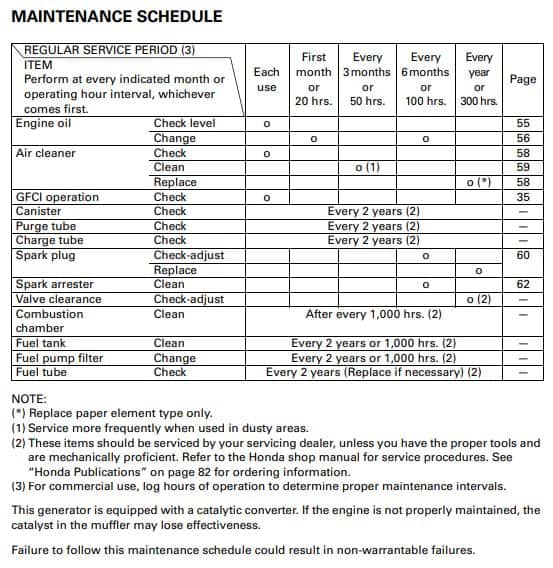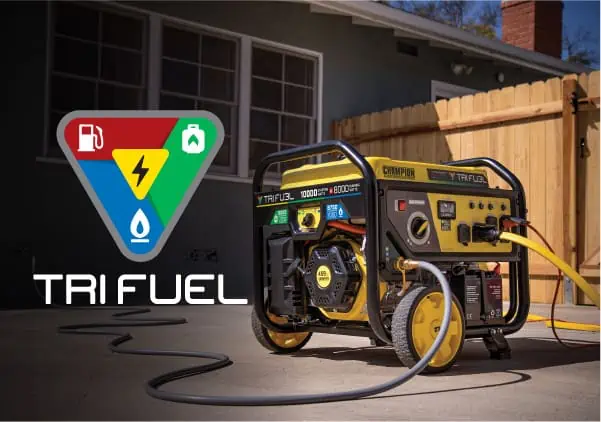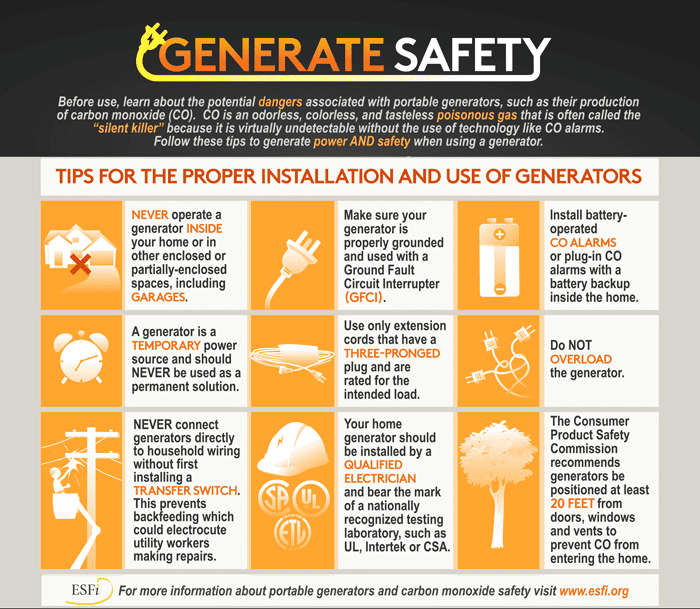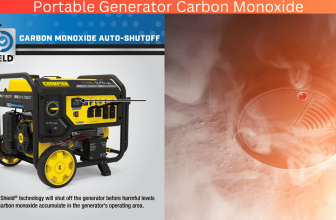
Picture this: You’re hunkered down at home during a massive thunderstorm when suddenly the lights go out – what do you do? A reliable option is having access to a portable generator which can provide critical power backup during times of need like natural disasters or other unexpected power outages. However, as with any equipment, safety is key to avoid additional harm or damage to both the machine and those handling it.
In this article, you will be guided on how to operate portable generators safely and effectively during emergencies. These guidelines will help you prepare for any challenges that may come your way.

Image Credit: Facebook
Choosing The Right Portable Generator
Selecting the perfect portable generator for use during emergencies requires careful consideration of various aspects.
Above all else, make sure that the generator has sufficient power capabilities that match your electricity needs in times of crisis.
Additionally, ensure you get one with an adequate fuel tank size so that refuelling doesn’t become a problem when using it regularly.
Opting for models with integrated safety features such as overload protection or surge protection can further enhance convenience and safety.
Once you’ve chosen an appropriate portable generator for your requirements, ensure you set it up safely and responsibly.
Install it in a well-ventilated area away from any combustible materials like gasoline or propane tanks and put it on an elevated surface above ground level if possible, avoiding any standing water damage in case of floods or inclement weather conditions.
Remember never to run generators unattended and always have someone monitor their operation at all times.
No one wants a mishap when using a portable generator during an emergency – it’s not the time for accidents! To prevent any mishaps from occurring it’s essential that we follow these safety guidelines.
This way, we can guarantee safe usage while minimizing potential risks or hazards.
After securing successful operation conditions for our generator, let’s discover how best to deploy it effectively during emergencies.

Image Credit: duthiepower
Setting Up The Portable Generator
Emergency situations require extra attention paid towards securing one’s family’s safety. One crucial aspect is configuring portable generators following critical safety tips while ensuring maximum output without endangering anyone’s health.
Investing time in locating suitable spots for placing generators becomes necessary; ensuring they are at least twenty feet away from openings leading inside homes plays a defining role in preventing harmful emissions like carbon monoxide from entering living spaces or harming anyone within them.
Using heavy-duty extension cords when connecting appliances directly to generators helps prevent overloading risks and ensures all connections are secure before starting them up.
Conducting regular inspections that systematically look out for signs of damage or weariness across all parts becomes mandatory as precautionary measures against potential hazards.
Your family’s safety during emergency situations is possible only through taking proactive steps such as the ones outlined above.

Image Credit: nbcnews
Operating The Portable Generator
When it comes to operating a portable generator safely and efficiently, there are key steps that must be taken first:
Begin by positioning the unit outdoors with adequate ventilation; keep it at least 20 feet away from your home or any flammable materials.
Plug all appliances into it using extension cords rated for outdoor use only; check each one carefully for frayed wires before connecting them together.
It’s also crucial not to refuel while the machine is still operational; let it cool down entirely first before refilling fuel tanks.
Lastly: Reviewing your owner’s manual thoroughly will grant more insight into how best to start and stop this powerful tool safely and effectively.
Following these guidelines strictly and keeping your unit maintained over time ensures that it will remain reliable when you need it most.

Image Credit: houmatoday
Maintaining The Portable Generator
Now who isn’t excited about getting their portable generator running? However, before doing so, there are crucial steps required to ensure its safety and efficiency during emergency situations.
So let’s dive into these critical maintenance steps. Start by ensuring that you only fill up your generator tank with the right type of fuel recommended for your engine model. Using fresh gasoline and doing the necessary checks specified by the manufacturer provides optimal performance when most needed.
Ensure to monitor oil levels regularly using high-quality engine oils recommended by trustworthy manufacturers, guaranteeing longevity while preserving peak performance over time.
Inspecting batteries is an essential aspect of maintaining generators. Check frequently for corrosion or any damage while cleaning off dirt or debris from terminals with appropriate tools, such as a wire brush or cloth where applicable.
Cleaning out all dust or dirt from inside the generator housing guarantees proper ventilation during operation, which affects overall performance positively.
Remember to read and follow thoroughly all owner’s manual instructions providing detailed information about these maintenance tasks and tips on operating generators safely during emergencies. With a heightened familiarity regarding the suitable measures to uphold your portable generator, let us progress to examining how best to store it during periods of non-use.

Image Credit: generatorbible
Storing The Portable Generator
It’s essential never to undermine the significance of proper storage for portable generators since it plays a critical role in their longevity and overall safety.
Moisture ranks high among factors that could potentially corrode or damage the gadget’s electrical components, which is why storing them in dry locations such as sheds or garages is crucial. Banish the practice of storing fuel within close range as it puts users at risk of explosions and hence renders storage unreliable.
Maintenance best practices entail checking oil levels before putting away your generator over an extended period since running out of oil causes engine damages that affect their lifespan substantially. Starting up generators periodically during prolonged periods of disuse safeguards against oxidation which inevitably leads to internal parts rusting over time
Lastly, enhancing safety protocols through unplugging all cords, including power sources, while not using generators, protects both individuals and machines from potential electrical accidents. Having covered the necessary precautions, let’s now explore practical safety measures for utilizing portable generators in emergency scenarios.

Image Credit: briggsandstratton
Safety Tips For Portable Generator Use
The proper use of a portable generator requires essential safety precautions that must be adhered to before operation.
Begin by carefully reading through all instructions detailed in the manual to guarantee optimal performance and safety measures while operating.
Avoid overloading your generator when connecting electrical appliances to prevent potential appliance damage or fire hazards.
When stationed outside your home office building or any other environment where there may be combustible materials nearby place your portable generator on a flat surface at least ten feet away from those items. Also, inspect its exhaust for any flammable objects frequently- carbon monoxide poisoning is always a possible danger with generators.
To protect both yourself and others around you while using a running generator, keep young children and pets securely out of harm’s way.
For further protection against noise levels & flying debris, wear protective goggles along with earplugs if necessary during operation.
And with those safety guidelines under our belt, let’s move forward with preparing fuel for our portable generators!

Image Credit: safety docs
Fueling The Portable Generator
Getting your portable generator ready for action means filling it up with fuel – a step that can feel a bit intimidating for some people. The good news? Fueling up isn’t hard – especially when you’ve got some basic information about how different types of fuels work. Take a look at this handy chart I put together summarizing each type:
| Fuel Type | Vapor Pressure | Octane Rating |
|---|---|---|
| Gasoline | Low | 87–90 |
| Ethanol | Medium | 105–108 |
| Propane | High | N/A |
To get started on the right foot, choose the right kind of fuel based on what your particular generator requires (check your owner’s manual if you’re unsure). When adding fuel, do so outside and with the engine switched off. Always make sure that everything is sealed up tight to prevent spills or accidents.
To ensure our portable generator’s safe and efficient use, it is essential to connect our appliances correctly, not just fill up the generator. When using a long-lasting tank, it is necessary to dispose of any leftover fuel properly. These precautions will guarantee that our emergency power requirements are met without problems.

Image Credit: championpowerequipment
Connecting Appliances To The Portable Generator
Portable generators have saved countless people from being without power during critical times.
Still, they need proper handling when connecting individual appliances; otherwise, they can become dangerous electrical power sources with unexpected results. When connecting a machine or multiple devices with a portable generator, please take note of their wattage requirements individually.
This precautionary step will help prevent damage caused by overloading as well as prolonging the life span through proper usage.
Another key factor is ensuring each extension cord has a high enough amperage rating necessary for outdoor usage if applicable – indoor cords may not cut it when exposed to rough elements.
To avoid any potential shock or short-circuiting hazards, plug the appliance in before connecting it to the generator. Finally, secure each connection properly and tightly before switching on any device.
Sticking to these simple yet important guidelines ensures both your portable generator and appliances operate safely and effectively during emergency situations. Armed with handy connection pointers it’s time to focus on an issue of paramount importance – keeping yourself safe from carbon monoxide poisoning when operating a portable generator.

Image Credit: jadelearning
Avoiding Carbon Monoxide Poisoning
A portable generator is a practical solution during emergencies such as power outages. However, using one without taking safety measures could be life-threatening! One essential hazard of using a generator is carbon monoxide poisoning- it should never be taken lightly! To ensure your safety while utilizing a generator during emergencies – here’s a glance at how carbon monoxide (CO) operates and ways you can prevent exposure to this harmful gas.
Misuse of gasoline or other fuel-burning appliances can produce a dangerous gas called Carbon Monoxide. This gas is odourless and colourless, and while small amounts may not be harmful when these devices are used correctly, higher concentrations can be quite dangerous.
Breathing in Carbon Monoxide limits oxygen transportation by our blood throughout organs leading to serious health complications like dizziness, headaches, nausea & in extreme cases- death; extended exposure could result in permanent organ damage.
Taking necessary steps, such as placing generators outdoors, can prevent these dangers from happening. Portable generators come in handy during power emergencies but require special care when being used to avoid CO poisoning.
By observing some necessary precautions, you can make sure that using a portable generator won’t jeopardize the safety and well-being of yourself or others. For instance, maintain a safe distance between the location of the device and any nearby windows or doors within 20 feet.
Regularly monitor your portable generator for any unusual noises or smoke, as they could indicate malfunctions that need prompt attention.
It’s equally crucial to ensure proper ventilation by setting up your unit outside where there’s plenty of fresh air circulation while keeping pets and children away at all times. These basic steps can help keep everyone safe while allowing for reliable emergency power generation during power outages caused by natural disasters or other events.
Remember always that safe usage of any portable generator is paramount to prevent carbon monoxide poisoning. Up next, let’s examine how to monitor your generator safely and adequately.
Monitoring Your Portable Generator
Portable generators are a go-to solution for many households and businesses alike. However, it’s vital to monitor your fuel usage consistently since running out of gas can lead to detrimental consequences for both you and your generator. To steer clear of unforeseen shutdowns during emergencies or extended use periods, maintain a full tank at all times. Checking the oil level periodically while the machine is in use can also detect issues early on, saving you maintenance costs in the future.
Understanding how much power each outlet consumes is crucial as this determines how long your generators can run on a single tank of gas. When refuelling or making repairs remember to follow safety protocols thoroughly – including reading through manuals beforehand and wearing protective gear like gloves. When a crisis strikes and the power goes out, having a portable generator on hand can provide vital access to electricity.
Yet as practical as these devices are, they also pose certain risks if not handled with care – particularly when it comes time to refill them. This is why taking some simple measures is essential for ensuring that your generator functions safely in an emergency scenario. Among these steps is ensuring that there are no flames or sparks nearby while refuelling – so stay mindful of cigarettes, lighters and matches!

Image Credit: nextdoor
Frequently Asked Questions
What Type Of Generator Should I Buy?
Selecting the appropriate generator can be a tricky task.
To make a wise choice, several critical factors must be considered. Foremostly, the amount of power required must be factored in when making your selection.
The perfect generator for your needs should have the capacity to support all your current and potential future devices and appliances effectively. The second factor entails considering fuel efficiency levels, noise emissions levels, plus portability aspects of your chosen generator.
If you’re seeking an emergency generator with high mobility that can easily fit into small spaces without hassle- portable generators are great options! Finally, yet importantly- always check customer reviews and ratings before making any purchase.
How Long Will The Generator Run On A Full Tank Of Fuel?
The endurance of a full fuel tank proves crucial in determining an ideal portable generator for your requirements. Depending on its size and type, one full tank can last anywhere between six hours to several days at length.
To make an informed decision about which one suits you best, take ample time out for research and thoroughly peruse the manufacturer’s guidelines prior to purchasing one. This way, you’ll be able to finalize on one that satisfies both – catering perfectly for your power needs whilst possessing enough fuel reserve during emergencies.
Are There Any Special Precautions I Need To Take When Using A Generator In Wet Weather?
A reliable generator can come in handy during stormy weather; however, taking necessary precautions should never be overlooked when operating one in wet conditions.
Firstly safeguard against any mishaps by keeping your machine well clear of open windows and doors whilst also avoiding placing it on damp soil or near water sources at all times.
When connecting your machine to power outlets outdoors, it's crucial to take all necessary precautions to ensure your safety and the safety of those around you. One of the most important things you can do is use heavy-duty extension cords designed explicitly for outdoor use. These cords are designed to withstand harsh weather conditions and reduce the risk of electrical shock or fire. deadly carbon monoxide poisoning. Always have a fire extinguisher close by in case of any incidents involving sparks or flames.
How Often Should I Change The Oil In My Generator?
If you want optimal functioning from your generator during its lifespan, then taking necessary steps towards upkeep, like regularly switching out its lubricant, is crucial – something as simple as changing the oil could make a significant difference.
The frequency at which the oil needs changing is ultimately dependent on how frequently you use your generator and the type of oil employed therein. Generally speaking, if mineral-based oils are your preference, then plan to change it every 50-100 hours, whereas if it’s synthetic or semi-synthetic, expect this interval to extend up to 150-200 hours.
Additionally, always ensure that prior to operating the device, the oil quantity is sufficient failure to do so could have dire consequences for your generator’s future performance.
Is It Safe To Use A Portable Generator Indoors?
Although portable generators may appear to be a convenient solution for indoor power outages, it’s essential to be aware of the potential risks that could lead to fatal consequences if neglected.
Carbon monoxide emissions from generators require caution since the gas is hazardous and hard to detect by human senses alone.
Enclosed spaces such as garages, sheds or covered patios are particularly dangerous environments for using these units as they can lead to gas buildup over time in these areas even when opened doors/windows might suggest otherwise.
During emergencies where generators must be used indoors, make sure you have installed a quality carbon monoxide detector system in place while keeping vigilant on staying within close proximity at all times.
Conclusion
When confronted with an emergency situation having access to a trustworthy power source is vital.
To guarantee that your portable generator is used safely and efficiently during such times, there are certain measures that must be taken.
Prior to buying, one evaluates its ability to run on full fuel tanks as well as its oil change frequency requirements.
Additionally, keep in mind that rainy weather presents unique challenges when operating outdoors; avoid indoor usage at all costs! Abiding by these critical safety recommendations while using portable generators in emergencies will help ensure uninterrupted access to electricity.





